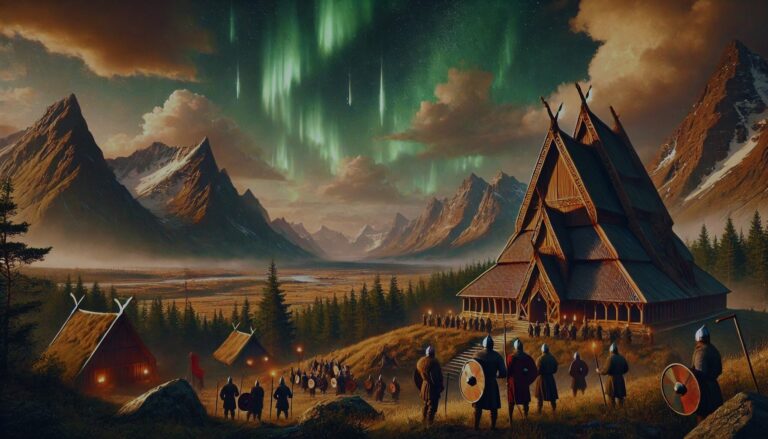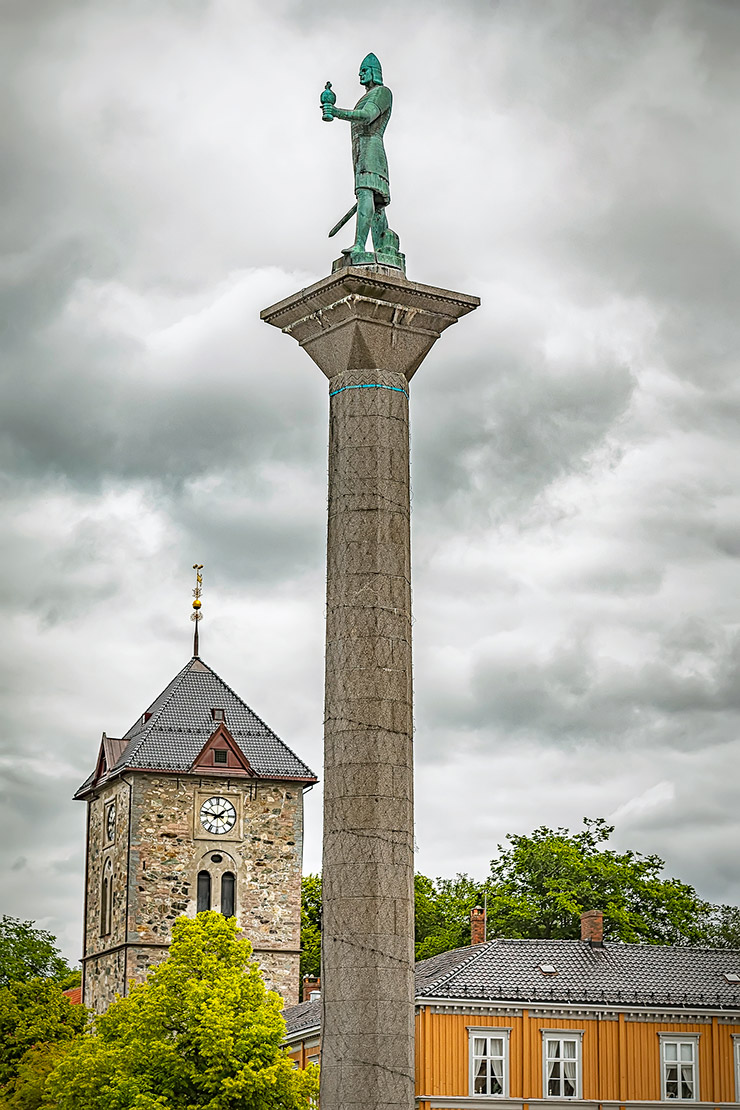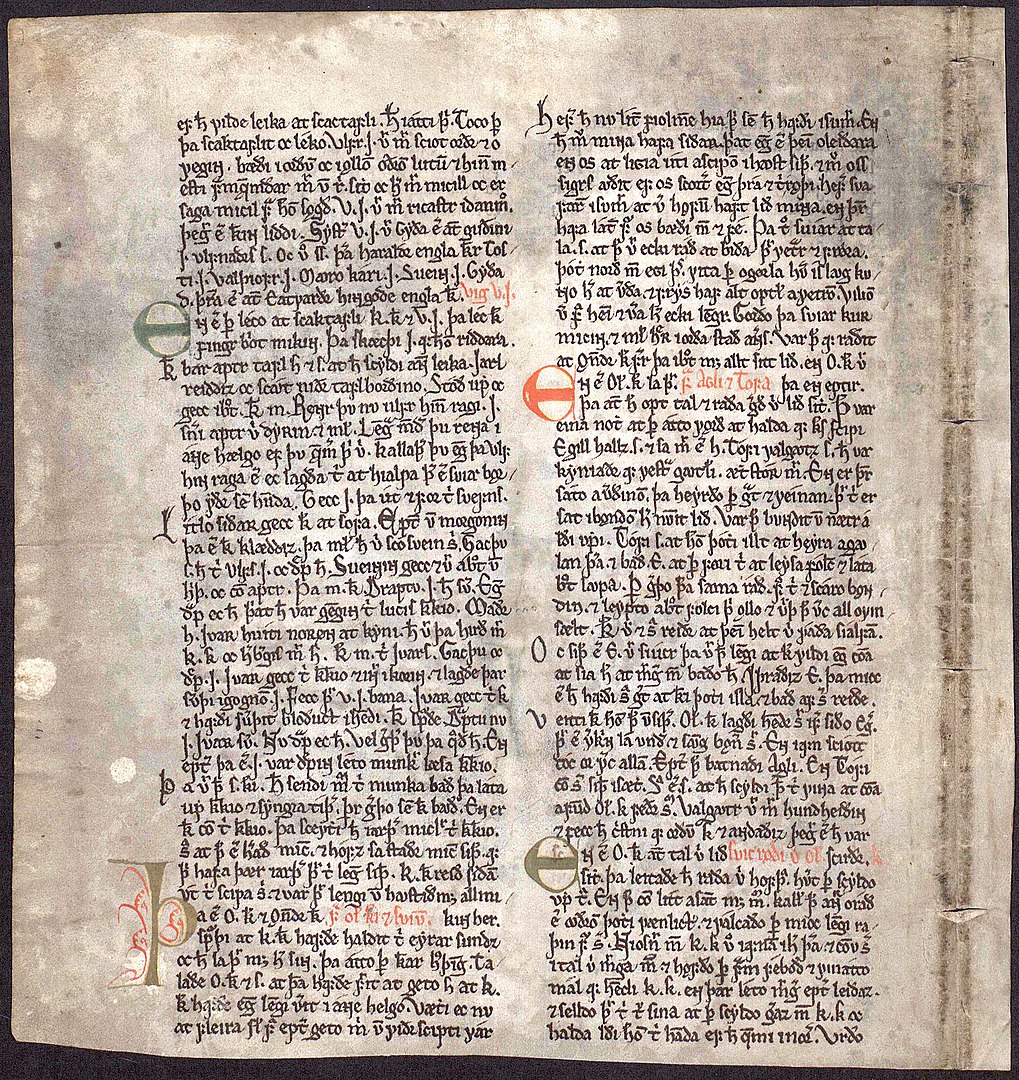One of the most treasured works of Old Norse literature, Heimskringla stands as a monumental chronicle of the early kings of Norway. Here's what you need to know.
Ever since I moved to Norway, I've fallen deeper and deeper down the rabbit hole of Norse mythology and the Icelandic sagas that followed. Having this blog means I can share what I learn with the world! Heimskringla is the latest topic.

This collection of medieval sagas offers a detailed narrative that spans from the mythic origins of the Norwegian royal lineage to the historical reigns of Norwegian Kings up to the 12th century.
The Work of Snorri Sturluson. Or is it?
Composed around 1230, Heimskringla is widely believed to be the work of the Icelandic poet, historian, and chieftain Snorri Sturluson, although the authorship is not explicitly attributed in the text.
Snorri's unique blend of literary skill and historical insight makes Heimskringla a cornerstone of medieval Scandinavian literature.
Through its vivid storytelling and rich historical context, Heimskringla not only provides a window into the lives and deeds of these rulers but also reflects the cultural and political landscapes of medieval Scandinavia.
The title Heimskringla, derived from the Old Norse phrase “kringla heimsins,” meaning “the orb of the world,” is taken from the opening words of the first saga in the collection, the Ynglinga Saga.
Legendary Descent of the Norwegian Kings
This saga traces the legendary descent of the Norwegian kings from the god Odin, who is depicted as a powerful conqueror and master of magic.

According to the saga, Odin migrated from the Black Sea region to Scandinavia, where his knowledge of runes and sorcery earned him dominion over the land.
The sagas that follow chart the evolution of the Norsemen, from their era as fearsome Vikings through their conversion to Christianity and eventual consolidation under unified rule.
Snorri's work is remarkable not only for its breadth but also for its literary and historiographical qualities. He possessed a rare talent for drama and realism, evident in his unsentimental portrayals of Norway's missionary kings, Olav Tryggvason and Olav II Haraldsson (St. Olav).
The Story of Saint Olav
The latter's saga occupies nearly a third of Heimskringla and is the collection's centrepiece.
It recounts St. Olav's transformation from a ruthless Viking raider to a devout Christian king who sought to unify Norway under both his rule and the Christian faith.
The saga of St. Olav is a masterful blend of historical events and character study, culminating in the king's martyrdom and subsequent sainthood, which solidified his legacy as the patron saint of Norway.
Historical Source?
Heimskringla’s value as a historical source has been debated, particularly regarding its blend of fact and myth.

While some sagas, especially those concerning early kings like Harald Fairhair and Haakon the Good, are grounded in historical events, others are interwoven with legendary and mythological elements.
Despite this, Snorri is often credited as a critical historian, particularly for his use of skaldic poetry—contemporary court poems that serve as some of the most reliable sources for the period.
His approach to history, characterised by a keen understanding of human nature and the political dynamics of his time, ensures that Heimskringla remains a vital source for understanding the early history of Norway.
Influence of Heimskringla
The influence of Heimskringla extends beyond its literary and historical significance. It played a crucial role in shaping Norwegian national identity, particularly during the nationalist movements of the 19th and 20th centuries.
As Norway sought to assert its independence after centuries of foreign rule, the sagas of Heimskringla provided a potent reminder of the country's storied past and its kings' heroic deeds.
Norway finally regained its sovereignty in 1814, although it immediately entered a union with Sweden. Following full Norwegian independence in 1905, the new king chose to honour this legacy by adopting the name Haakon, one of the kings chronicled in Heimskringla.
Heimskringla is a cultural treasure that has shaped the national consciousness of Norway.
Through Snorri Sturluson's masterful storytelling, the history of the early Norwegian kings is brought to life, offering readers a captivating blend of myth, history, and literature that continues to resonate through the centuries.
The manuscript history and ongoing scholarly debates surrounding its authorship only add to the mystique and enduring relevance of this seminal work.

